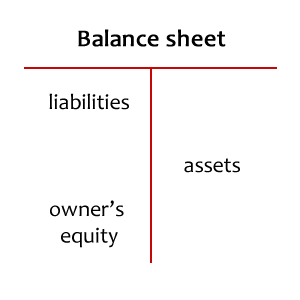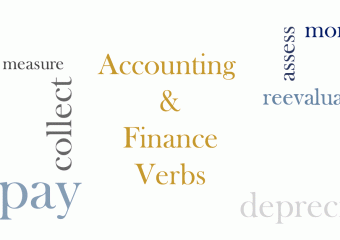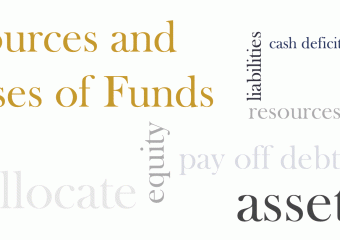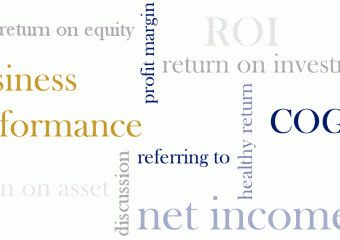Starter
Match each word with its meaning.
1. expenses
2. shareholder
3. debt
4. assets
5. balance sheet
6. liabilities
7. capital
8. owner’s equity
9. bankrupt
10. profitability
a. money that is borrowed and needs to be paid back, often with interest.
b. the value of a company that belongs to its owner(s), calculated as total assets minus liabilities.
g. a person or company that cannot pay their debts and has been legally declared insolvent.
c. the ability of a business or activity to earn money and make a profit.
d. money spent on goods or services, especially as part of running a business or household.
e. money or assets used by a person or company to start or run a business or for investment purposes.
f. a financial statement showing the total assets, liabilities, and equity of a company at a specific time.
h. the amounts of money that a company or person owes to others, such as loans or bills.
i. s person or organization that owns shares in a company, giving them a part of the company’s ownership.
j. things that a company or person owns, such as money, property, or equipment, which are valuable and can be used to pay debts.
Finance and Accounting
Finance and accounting play a significant role in ensuring the sustainability of businesses. A business needs to accumulate funds large enough to operate effectively and achieve profitability. Individuals with savings invest it in a business to profit from it. The business may be managed by the investors or by external managers and staff. If business operations are the heart of a business, financial management is the mind.
A business uses investments to buy equipment, raw material, and other facilities required for its activities. It hires the workforce, and runs its operations in a way that they lead to a profit at the end of every fiscal year. Shareholders aim for increasing returns annually, making effective operations essential. However, despite careful planning, businesses occasionally encounter challenges that hinder profitability. Factors influencing business profitability can stem from external challenges, such as market conditions, or internal issues, such as operational inefficiencies. Accounting and financial management follow a fundamental rule that allows for careful monitoring of financial activities.
The Fundamental Rule
Since we are speaking in terms of the financial aspects of a business, the balance sheet equation helps clarify some points:
Assets=Liabilities + Owner’s Equity

Owner’s Equity
For a business to operate, it needs money, equipment, and people. The funds are provided by individuals willing to invest in the company. Consequently, the business’s assets are owned by its investors. These investors are recognized as shareholders of the company and the total sum of this investment is referred to as the owner’s equity. Shareholders anticipate returns on their investments and the business utilizes this capital to operate.
Assets
The capital is utilized to purchase equipment and raw materials. Assets are also employed to facilitate business operations. Examples of assets include cash, buildings, land, investments, and brands. Resources are undoubtedly finite, underscoring the need for efficient management to transform a business into a profitable and sustainable enterprise. Everything a business owns constitutes its assets—resources available to achieve profitability. However, the mismanagement or misuse of these assets can result in significant financial losses.
Finance and accounting ensure that the company maintains a clear understanding of its balance of assets and liabilities. They also provide a comprehensive overview of the company’s financial status, enabling managers and investors to make well-informed decisions.
Liabilities
Every business operation involves the circulation of money between the company and other entities, such as businesses or individuals. A business maintains an account to record its debts, which are referred to as liabilities. Liabilities represent the company’s expenses and must eventually be repaid—whether in the short or long term. Excessive debt, where the total liabilities exceed the company’s earnings, can pose a significant threat to its financial stability. Moreover, if liabilities become equal to or exceed the owner’s equity, the company may be officially declared bankrupt. This underscores the critical importance of managing resources effectively.
Financial management and sustainability
Understanding the utilization of finances is fundamental to effective business management. Funds serve as the primary resource for all business activities and must be managed wisely to ensure sustainable growth. Optimized financial management directly enhances overall outcomes, driving success and stability. Simply put, without proper financing, a business cannot operate.
Task 1
1. Present your company’s current financial performance in a short report.






